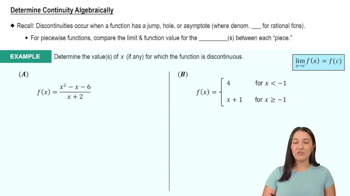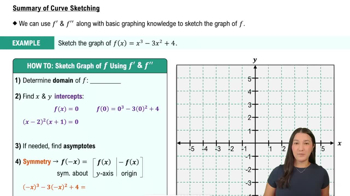Refer to the given figure. Write the radius r of the circle in terms of α and θ.
Table of contents
- 0. Functions7h 54m
- Introduction to Functions16m
- Piecewise Functions10m
- Properties of Functions9m
- Common Functions1h 8m
- Transformations5m
- Combining Functions27m
- Exponent rules32m
- Exponential Functions28m
- Logarithmic Functions24m
- Properties of Logarithms36m
- Exponential & Logarithmic Equations35m
- Introduction to Trigonometric Functions38m
- Graphs of Trigonometric Functions44m
- Trigonometric Identities47m
- Inverse Trigonometric Functions48m
- 1. Limits and Continuity2h 2m
- 2. Intro to Derivatives1h 33m
- 3. Techniques of Differentiation3h 18m
- 4. Applications of Derivatives2h 38m
- 5. Graphical Applications of Derivatives6h 2m
- 6. Derivatives of Inverse, Exponential, & Logarithmic Functions2h 37m
- 7. Antiderivatives & Indefinite Integrals1h 26m
- 8. Definite Integrals4h 44m
- 9. Graphical Applications of Integrals2h 27m
- 10. Physics Applications of Integrals 3h 16m
- 11. Integrals of Inverse, Exponential, & Logarithmic Functions2h 31m
- 12. Techniques of Integration7h 41m
- 13. Intro to Differential Equations2h 55m
- 14. Sequences & Series5h 36m
- 15. Power Series2h 19m
- 16. Parametric Equations & Polar Coordinates7h 58m
0. Functions
Introduction to Trigonometric Functions
Problem 3.7.60a
Textbook Question
Computer Explorations
Use a CAS to perform the following steps in Exercises 55–62.
a. Plot the equation with the implicit plotter of a CAS. Check to see that the given point P satisfies the equation.
xy³ + tan(x + y) = 1, P(π/4, 0)
 Verified step by step guidance
Verified step by step guidance1
Start by understanding the given equation: \(xy^3 + \tan(x + y) = 1\). This is an implicit equation involving both x and y.
Use a Computer Algebra System (CAS) to plot the equation. Input the equation into the implicit plotter feature of the CAS to visualize the curve represented by the equation.
To verify if the point P(\(\frac{\pi}{4}, 0\)) satisfies the equation, substitute \(x = \frac{\pi}{4}\) and \(y = 0\) into the equation.
Calculate the left-hand side of the equation with the substituted values: \(\left(\frac{\pi}{4}\right)(0)^3 + \tan\left(\frac{\pi}{4} + 0\right)\).
Check if the calculated value from the previous step equals 1, which is the right-hand side of the equation. If it does, then the point P satisfies the equation.
 Verified video answer for a similar problem:
Verified video answer for a similar problem:This video solution was recommended by our tutors as helpful for the problem above
Video duration:
1mPlay a video:
Was this helpful?
Key Concepts
Here are the essential concepts you must grasp in order to answer the question correctly.
Implicit Plotting
Implicit plotting involves graphing equations where the relationship between variables is not explicitly solved for one variable in terms of the others. In this case, the equation xy³ + tan(x + y) = 1 is plotted using a Computer Algebra System (CAS) to visualize solutions that satisfy the equation, including checking specific points like P(π/4, 0).
Recommended video:

Finding The Implicit Derivative
Computer Algebra System (CAS)
A Computer Algebra System (CAS) is software designed to perform symbolic mathematical computations. It can handle tasks such as algebraic simplifications, solving equations, and plotting graphs. In this exercise, a CAS is used to plot the implicit equation and verify if the point P satisfies the equation, showcasing its utility in handling complex mathematical operations.
Recommended video:

Determine Continuity Algebraically
Verification of Points on Curves
Verifying if a point lies on a curve involves substituting the point's coordinates into the equation and checking if the equation holds true. For the equation xy³ + tan(x + y) = 1, substituting P(π/4, 0) checks if the left-hand side equals 1, confirming whether P is a solution to the equation. This process is crucial for understanding the relationship between the equation and specific points.
Recommended video:

Summary of Curve Sketching

 5:4m
5:4mWatch next
Master Converting between Degrees & Radians with a bite sized video explanation from Patrick
Start learningRelated Videos
Related Practice
Textbook Question
